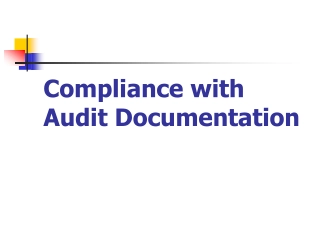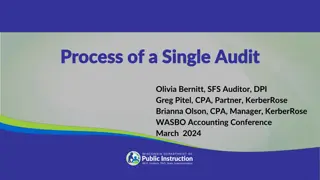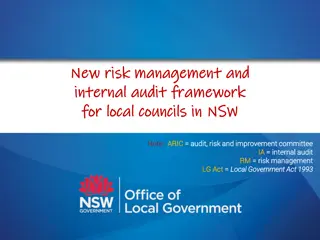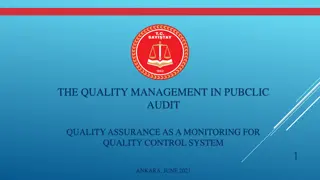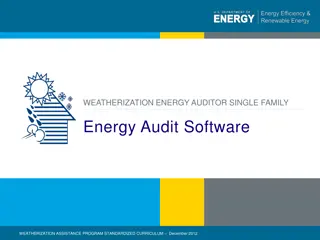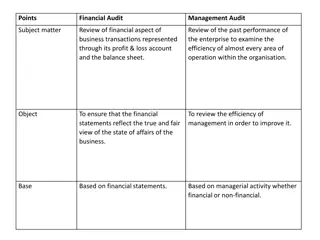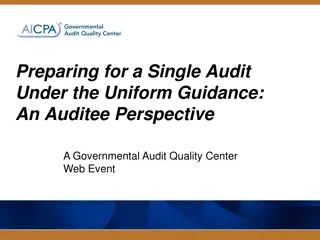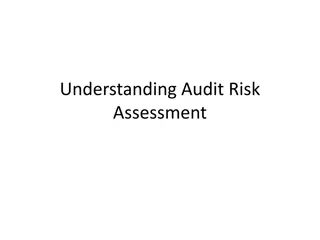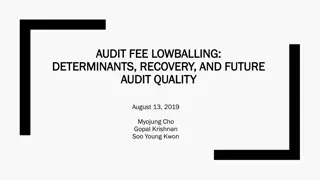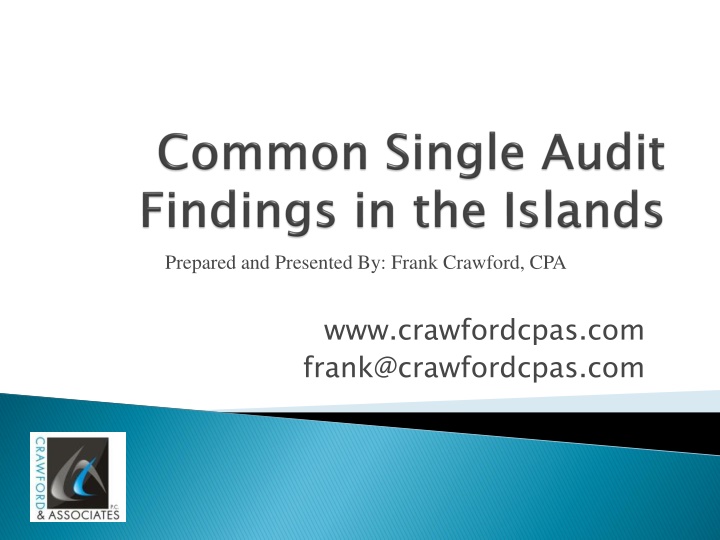
Understanding Internal Control Findings and Recommendations
Explore the key elements of internal control findings - criteria, condition, cause, effect, and recommendation - and learn how to effectively address them for enhanced compliance and risk management in organizations.
Download Presentation

Please find below an Image/Link to download the presentation.
The content on the website is provided AS IS for your information and personal use only. It may not be sold, licensed, or shared on other websites without obtaining consent from the author. If you encounter any issues during the download, it is possible that the publisher has removed the file from their server.
You are allowed to download the files provided on this website for personal or commercial use, subject to the condition that they are used lawfully. All files are the property of their respective owners.
The content on the website is provided AS IS for your information and personal use only. It may not be sold, licensed, or shared on other websites without obtaining consent from the author.
E N D
Presentation Transcript
Prepared and Presented By: Frank Crawford, CPA www.crawfordcpas.com frank@crawfordcpas.com
CRITERIA CONDITION CAUSE EFFECT RECOMMENDATION / BENEFIT MANAGEMENT RESPONSE
What Should Be For internal control findings, criteria is the control element, policy or procedure that should be designed and/or complied with For compliance findings, the criteria is the specific compliance requirement
What Is or Has Happened For internal control findings, condition is a finding that an important control element, policy or procedure is not designed, or is designed but not complied with For compliance findings, the condition is the specific finding or instance of noncompliance
Why the Condition Exists or Occurred Cause is the most difficult element of a complete finding to write; if not written well, it will be difficult to understand; the writer of the finding must use their best professional judgment to determine cause Cause may involve multiple issues such as lack of priority, ability, resources, motivation, or may involve intent It is the most crucial element of the finding for writing an effective recommendation for corrective action
What Has or Can Happen as a Result Effect is important to communicate in order to get the attention of the decision makers Effect could involve the occurrence or higher than acceptable risk of: Undetected errors Undetected fraud Financial losses Increased liability
What You Should Do About It The recommendation must be specific and complete if you expect the proposed corrective action to be the right corrective action and be effective The recommendation is built upon the proper identification of the cause
Proposed Corrective Action or Inaction Management s response is important to ensure the finding is not in error or to learn that mitigating factors may exist Auditors should let management know when their proposed corrective action may not be sufficient to correct the condition
Types of Findings Internal control deficiencies Noncompliance Other matters Appropriate Reports Financial reporting on internal control, compliance and other matters financial statements (YB) Financial reporting on internal control and compliance - A133 Single Audit Single audit schedule of findings and questioned costs Management letter
Controls over financial reporting Significant deficiencies Material weaknesses Controls over compliance Financial statements Significant deficiencies Material weaknesses Federal awards Significant deficiencies Material weaknesses
Financial statements compliance Direct and material effect Federal awards compliance Material to a type of requirement of a major program
Potential fraud Indications of abuse Other operational or performance matters

